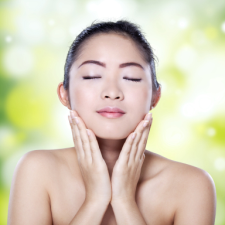Ethnic Beauty Q&A with Daymon Worldwide, Inc. 5/29/2015
How can drug chains appeal to the growing number of ethnic consumers, particularly Hispanics, but also the rising black middle class, with beauty products?
Although ethnic beauty products exist, these growing consumer groups continues to struggle to find products that are optimal in addressing their particular needs. The opportunity for brands and retailers to connect with ethnic consumers is significant but the key takeaway is don’t isolate any one demographic. Hispanics are more likely than non-Hispanics to say they choose retailers based on sales associates that are available to assist them with beauty purchases. Bilingual associates, in store signage, and other marketing tactics such as bilingual ad circulars and store announcements can be particularly helpful in creating retailer loyalty.
Is it more important for beauty products to target particular ethnicities, or to be multicultural?
The multicultural beauty consumer is becoming the norm. By 2019, the U.S. Census Bureau projects that white children will account for less than half of the under-18 population. It is critical for beauty products to target particular ethnicities as beauty regimes and cultural nuances differ by ethnicities – a one size fits all approach will not work.
What should chain drug retailers know about the shopping habits of different ethnic groups and how should they merchandise ethnic beauty products accordingly?
In general, ethnic consumers are less concerned about the cost of a product and are willing to spend money on high-quality products that address their needs. Hispanics tend to spend more than non-Hispanics on beauty and personal care and emphasize the importance of looking their best; this demographic prides themselves on their appearance.
Blacks and Hispanics are likely to be impulsive in their buys and in their purchase decision, they factor in ads and in-store displays featuring new items. Retailers should use this as an opportunity to dedicate in store signage and displays to showcasing new products to increase the impulsive buys and potentially the basket size of these consumers.
Which beauty segments are most important to different ethnic groups?
In general Blacks are most concerned with hair care, as their unique hair texture calls for different hair products that are specialized to meet their hair concerns. Nielsen reports that Black women spend more than nine times more on hair products than any other ethnicity. Asians, on the other hand, place a huge emphasis on their skin care regimes with Asian women using, on daily average, 18 beauty products. This demographic is devoted to maintaining their youthful complexion, focusing on anti-aging products as well as specialty products such as facial masks. For Hispanics, it’s the whole package but color is key – color cosmetics, nail care, and hair color in particular is very important to this demographic for maintaining their appearance.
Are there some segments that ethnic groups care more about than members of the mainstream market?
Hispanics are less prone to short term sun damage but, in general, skin tends to be oily so repackaging skin care and acne products targeted to this demographic could be an opportunity to address this concern. Blacks are highly into body and skin care; their spend on body and hand lotion is higher than the general population but like Hispanics their sunscreen usage is low; however they are still at risk for sun damage so sun care remains as an opportunity for growth with this demographic.
Men’s grooming is also another important segment to ethnic males. Razor bump is a real concern for black men and as such, males have a more involved grooming routine than their Caucasian counterparts. Looking good is a top priority for Hispanic and Asian males. While Hispanic males skew more towards deodorant and fragrance, Asian males, much like their female equals, concentrate on skin care products to enhance their appearance.
Which drug chains do the best job of targeting ethnic groups, and how so?
With CVS’ acquisition of Navarro pharmacy, the largest Hispanic-owned drugstore chain in the U.S., I expect to see CVS ramp up their ethnic targeting by leveraging Navarro’s expertise with capturing and maintaining this demographic and pinpointing product assortment and marketing where multicultural demographics highly index.
Target has done a phenomenal job with their multicultural beauty assortment trying to establish themselves as a destination in this, once niche, segment. They have created a multicultural beauty webpage curating the best hair care, color cosmetics, and skin care products that address the needs of Blacks and Hispanics. They also have brought in new brands this past spring – Oyin Handmade addressing the hair and skin care needs of Blacks and Imágen a hair care brand targeting Hispanics. In addition, Target brought in Carol’s Daughter earlier this year and the retailer is the exclusive carrier of the Sacred Tiare collection by Carol’s Daughter, a hair care collection said to stop breakage and smooth frizz at the same time. Select stores have an “ethnic hair” assortment; in addition Target has dedicated end cap displays to brands that appeal to ethnic consumers by filling the display with products from brands such as Carol’s Daughter, Kinky-Curly and SheaMoisture.

